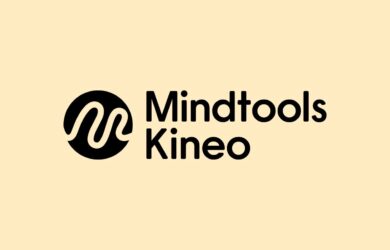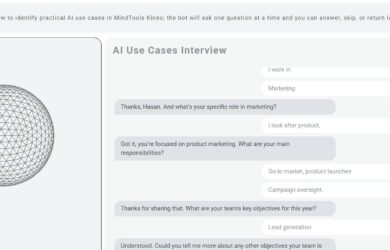Are you part of an L&D team and struggle to get members of your organization to engage in your learning initiatives? Are you faced with trying to prove a return on investment for budget holders and high-level management?
These are common challenges I hear from clients, particularly around contract renewal time. In my experience, many decision-makers simply haven’t had much exposure to learning tools, engagement strategies, or the strategic thinking that goes into them. Therefore, it can be a challenge to demonstrate the real value L&D initiatives can bring to the business.
It’s understandable that these programmes are sometimes viewed as tick-box exercises, like compliance e-learning (which, to be fair, does need ticking!) rather than opportunities for meaningful impact when given the right investment.
There is a solution – measurement!
If your stakeholders primarily deal in numbers, then bring them the numbers, but remember, these don’t always have to come from spreadsheets.
Feedback, case studies, and real stories from your people can be just as powerful in showing impact. Combine this with clear engagement plans and the KPIs you’re setting for future growth, and you’ll build a compelling case for how your L&D initiatives are driving meaningful results across your organization.
What do your managers really need?
Sometimes L&D is misunderstood in organizations and stakeholders don’t always see its contribution to the bottom line. As mentioned before, It can be seen as a tick box exercise that just takes up valuable time. When learning isn’t seen as a priority it gets dropped to the bottom of the to-do list.
By really understanding what skills managers in your organization need to develop and finding a way to build this into the culture of your teams, it helps to remove objections. Instead, it encourages engagement and advocacy amongst managers.
Don’t just run on assumptions, especially not the well-meaning assumptions of managers who believe they know exactly where their strengths and gaps lie! A little insight and data can often reveal opportunities for growth that aren’t immediately obvious, even to them.
Assess your managers’ skillsets and set benchmarks in your organization. For example, with the Mindtools Manager Skills Assessment, each manager can take a personal assessment to identify their skills strengths and gaps. From the results, a clearer and more targeted development plan can be created, specifically for the individual. Learning becomes far more effective (and easier!) when the learner actually knows where to start.
This personal benchmark can be used by individuals to set their own goals and inform reviews with their managers. Plus, L&D teams can view the results at a company level, getting a benchmark across the business and highlighting the areas which they should prioritise.
These assessments are important for all managers, not just those who are new. Managers who have been in their roles for decades may resist this sort of development as they believe they are already experienced; however, the management landscape is constantly changing.
Taking stock of manager skills is beneficial to everyone as management evolves to meet new demands – new generations of workers, new technologies or even new industry challenges. Keeping up with the latest management skills and styles leads to more effective managers. When managers grow, the positive impact can be felt company-wide, from team performance to overall business success.
“But I don’t have time for learning!”
I’m sure you hear this a lot. With all the increasingly stretched pressures that managers are put under, we know it isn’t always easy to get the engagement in learning that you need.
A client in one of my recent check-in calls summed this up brilliantly. In the story of the woodcutter – continuing to cut trees non-stop will clear the area you need, but if you pause and take the time to regularly sharpen the blade, you’ll be able to cut the trees down much quicker and more easily. Don’t get so busy that you don’t take time to sharpen your axe.
It’s so easy to get caught up in the doing that we forget to invest in getting better at how we do it. Taking time to sharpen skills can lead to significant improvements in performance, greater efficiency and impact. This investment in your people is crucial for long-term success. Regularly updating and improving skills supports continuous growth and better results.
Mindtools’ learning resources are designed to be consumed in short bursts, in the flow of work. This means your managers don’t have to block out large parts of their day to complete learning tasks. Instead, they can set aside 10 minutes regularly to work through their own learning plan. It all adds up! Mindtools learning resources are also provided in a range of formats to help engage learners in whichever way suits them best.
Regular reflection is key
Once you have your initial benchmark and you’ve identified the areas to focus your L&D plans on – regular check-ins are the next step.
Be careful not to check in on progress too soon. Like any skill, developing as a manager takes time and practice. Checking in too soon can lead to unmotivated employees and a lack of visible progress.
I would usually recommend a six-month check-in or re-evaluation, but the ideal timeframe can vary depending on the company’s current learning culture and business priorities. This reflection is a great opportunity for managers to take the assessment again, compare their results and update their mid-year or annual performance review. They may find they have developed more in a certain area and can then set their learning goals for the next six months.
Providing a six-monthly benchmark update to stakeholders can also prove the impact that the learning initiatives are having on the organization – making those budget conversations a little easier! On top of that, gathering feedback directly from managers adds another layer of insight—helping you understand how the development is impacting them personally and professionally.
The impact learning has on retention alone can be a huge factor. Our Building Better Managers research report found that 64% of managers would look for another job if their organization failed to give them opportunities to learn. This rises to 80% for managers under the age of 35.
Impact of Learning and Development
Making an impact on a personal level motivates employees to continue developing. In turn, this investment in people can lead to better company performance and a strong learning culture. Proving ROI and impact at an organizational level is essential.
Here are some key takeaways to help you plan and start measuring the learning in your organization:
- Ripple Effect: Investing in people builds a strong learning culture. Managers are also the best advocates for their teams. If your managers lead by doing and prioritizing learning, their teams will too.
- People Investment: A strong learning culture benefits both the organization and its people. This culture encourages continuous development and better performance.
- Organizational Impact: Demonstrating impact helps justify investments in learning and development.
- Personal Impact: Making an impact on a personal level translates to better performance. When employees see the benefits of their development, they are motivated to continue improving.
- Motivation: Proving ROI and impact motivates employees to engage in learning and development. Seeing tangible results encourages continuous growth.
Ready to start measuring your learning?
Get in touch with our experts today to learn more about the Manager Skills Assessment and discover other solutions our experts can develop to address your organization’s specific needs.




